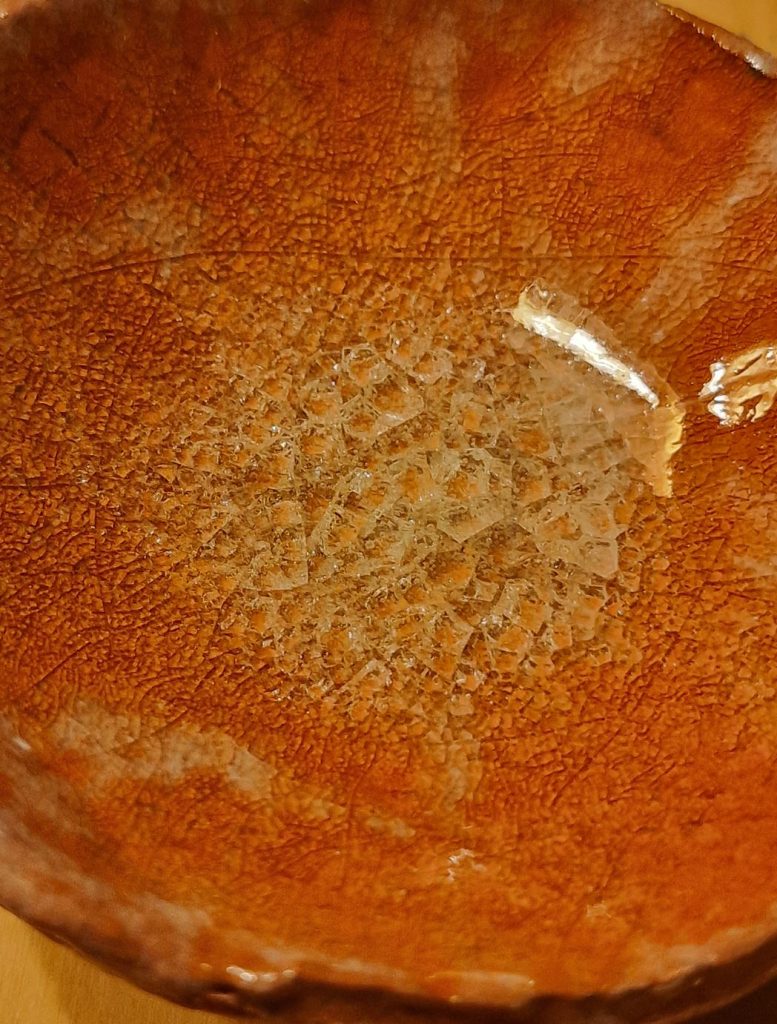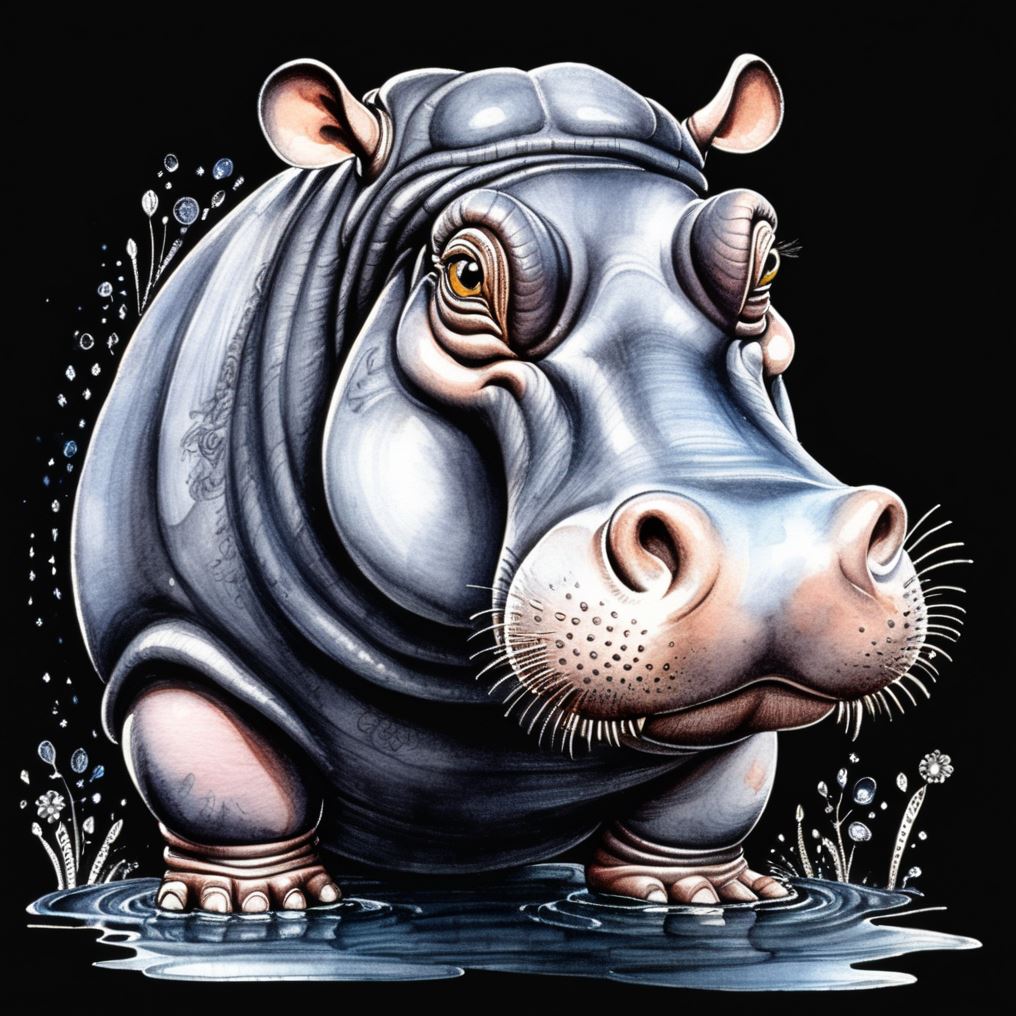
9 Important fluxes for ceramics
This is a simplified introduction to the complex topic of fluxing agents for ceramics.
It sketch up the 9 most essential families of raw-material flux for ceramic glazes.
What is a ceramics flux?
Fluxes are usually metal oxides used in glazes and ceramic bodies to lower the melting point. Potter’s often uses substances with a higher melting temperature than their kilns can reach. By adding fluxing agents we can decrease the melting temperature so glazes can melt, and clay-bodies sinter. Flux often melts poorly on its own but reacts strongly with other materials. As a rule of thumb; the more flux added to the glaze, the lower the melting temperature. For low-fire glazes, as much as 60 – 90% of the glaze receipts can contain fluxing agents.
The 9 main fluxing agents in ceramic glazes:
Ceramic raw material fluxes can be a confusing chapter; especially the Potassium / Feldspar / Sodium intermingling can take some time to wrap your head around. Here I try to make an overview, and the goal is simplicity for practical use. I hope it can straighten up some lines.
In this list:
- I retired Lead and Barium due to health and environmental concerns.
- I only add the essential raw material fluxing agents, there are many more.
- I added Feldspar as its own “family”, though Feldspar is a group of minerals.
- I don’t list fluxing oxides if they are primarily used as colorants.
Boron(B) – The fast Cheetah
Boron raw mineral sources: Gerstley Borate, and Colemanite. Boron is a powerful flux, and Borax is a raw source of Boron, but Borax is soluble in water and not something to use directly in glazes. Borax frits are popular since it’s pre-melted and grounded, and no longer soluble in water. Borax can significantly lower the melting temperature of glazes, and act as a strong melting agent. Borax is a key flux in many low-fired glazes.
Boron sources in the potter’s workshop:
Borax – melting point 743 °C (many types of frits)
Gerstley Borate – begins to melt at 840 °C
Colemanite – melting point 954 °C
Calcium(Ca) – The White Swan
Calcium: Alkaline Earth Metal group, raw material sources: Chalk, Marble, Limestone, Eggshell, Seashells, and more (roast raw materials like Eggshell and Seashells so they are less hard, but not over 550°C). Calcium Carbonate is an inorganic salt, an economical material, and a high-temperature flux. Calcium Carbonate is also called “Whiting” and makes white, milky glazes. Calcium adds hardness and increases chemical resistance to glazes.
Calcium sources in the potter’s workshop:
Calcium Carbonate (Whiting) – melting point 825 °C
Chalk (99% Calcium Carbonate) – melting point 1339 °C
Wood-ash – melting point (depends on its specific composition)
Feldspar – The Fateful Dog
Feldspar is not a single mineral but a group of minerals. Feldspar is a natural resource, containing (among others): Calcium Oxide, Potassium Oxide, and Sodium Oxide, all 3 described in this list as fluxing agents. This makes Feldspar a significant flux. The two most common feldspars for Potter’s are “Potash Feldspar”, and “Soda Feldspar” (Albite). Feldspare affects the viscosity and fluidity of the melt, and influences the characteristics of the glaze. Feldspar is a glaze on its own, in fact; In Feldspar, Potassium (potash) and Sodium (soda) are insoluble, making Feldspar a naturally occurring Frit. Feldspar earned its name: “the Potter’s friend”.
Nepheline Syenite also contains high levels of Sodium Oxides and Potassium Oxides like Feldspar, but not with a sufficient amount of silica to be classified as Feldspar. Nepheline Syenite is a middle-to-high-temperature ceramic flux.
Feldspar and Nepheline Syenite sources in the potter’s workshop:
Sodium Feldspar (albite) – melting point: 1100 – 1120 °C
Potassium Feldspar – melting point: around 1200C
Nepheline Syenite – melting point: (lower than Feldspar, depending on its specific composition)
Lithium(Li) – The Mighty Hippo
Lithium: The alkali metal group, raw material source: Lithium-enriched brines, and Lithium Pegmatites. Lithium is a very strong alkaline low-temperature flux and a powerful melter. Lithium is used in small amounts (up to 5%) and makes fluid glazes and a glossy surface, often used in combination with other fluxes.
Lithium sources in the potter’s workshop:
Lithium Carbonate – melting point 723 °C
Magnesium(Mg) – The Team-working Ant
Magnesium: Alkaline Earth Metals group, raw material sources: Found in many minerals, but commercially dolomite, magnesite, and talc. Magnesium Carbonate (MgCO3) Is refractory at low temperatures, while an active flux at high temperatures. Magnesium is a secondary flux, meaning it performs poorly alone, but can form eutectic systems with other oxides, producing melts at really low temperatures.
Magnesium sources in the potter’s workshop:
Magnesium Carbonate – melting point 990 °C
Manganese(Mn) – The Black Crow
Manganese: Raw material source: Pyrolusite, Romanechite, Manganite, and Hausmannite.
Manganese dioxide is a colorant in smaller quantities; violet, purple, red, brown, and black. But acts as a strong flux in large amounts.
Manganese sources in the potter’s workshop:
Manganese dioxide – melting point 535 °C
Potassium(K) – The Rapid Falcon
Potassium: Alkaline Earth Metals Group, raw material sources: The 7th most abundant element on Earth’s crust. Potassium is found in Feldspars and clays among others. Potassium is a strong ceramic flux, Potassium Oxide has a melting point 740 °C. It’s water-soluble, and a very reactive element never found in free form in nature. Potassium can also be used as a color modifier in glazes. Potassium(K) and Sodium(Na) have quite similar fluxing characteristics. Potassium-Feldspar is a common Feldspar type used in ceramics, together with Sodium Feldspar. The name “Pot Ash” derives from Wood Ash soaked in water in a pot, water dissolves the water-soluble Potassium into Lye (or Potash-Lye). Evaporating the water from the Lye results in a white powder called “Pot Ash” (this is the pre-industrial process).
Potassium in it's clean form is a higly reactive chemical; caustic, flammable and a explotion hazard. Potassium reacts with oxygen and the moist in air, it react violently with water produsing Hydrogen gas (H2): Heat from the reaction, combined with the Hydrogen gas, can be explosive.
Familiarize yourself with the safety information before use of Potassium
Pottasium sources in the potter’s workshop:
Potassium Feldspar – melting point around 1200 °C (the most common form used in pottery)
Potassium carbonate – also known as Potash. Formula: CK2O3, melting point 891 °C
Pearl Ash or “salts of tartar” – Potash baked in a kiln to remove impurities, melting point 891 °C
Wood-ash – melting point (depends on its specific composition)
Strontium(Sr) – The Armadillo
Strontium: Alkaline Earth Metal group, raw material sources: Mined from celestite and strontianite. Strontium carbonate is a hige-fire flux. And a common substitute for the more unhealthy Barium Carbonate. The metal Strontium has a melting point 777 °C . Strontium Carbonate gives a scratch-resistant surface and impacts the color development in glazes.
Strontium sources in the potter’s workshop:
Strontium Carbonate – melting point (starts to melt at) 1100 °C
Sodium(Na) – The Swift Hummingbird
Sodium: The alkali metal group, raw material source: Sodium is a soft, silvery-white, highly reactive metal, it’s too reactive to be found as a metal in nature. Found in minerals like cryolite, zeolite, and sodalite. Table salt consists of equal numbers of sodium cations and chloride anions. “Sodium-Feldspar” is mined from Feldspar containing high amounts of Sodium Oxide. Soda Ash (Sodium Carbonate) is a ceramic flux commonly used in low-fired glazes. Sodium chloride (also known as edible, or table salt) is calcined, meaning it is purer and lost its chemically bounded water. Both types can be used in glazes and ceramics.
Sodium sources in the potter’s workshop:
Sodium Chloride – melting point 801 °C (ordinary table salt)
Sodium Carbonate – melting point 851 °C
Sodium Bicarbonate (washing soda) Starts to decompose to Sodium Carbonate over 50 °C
Wood-ash – melting point (depends on its specific composition)
Zink(Zn) – The Jellyfishes
Zinc: Raw material source: The most common is Sphalerite, a zinc sulfide mineral. Zink is used as an opacifying agent and as a crystallization agent. Zinc oxide is a fluxing agent and promotes glossiness in glazes. Zink is a secondary flux, meaning it is most effective together with other fluxing agents.
Zinc sources in the potter’s workshop:
Zink – melting point 419,5 °C

The Flux list for ceramics:
1 – Boron(B) – The strong and fast Cheetah
2 – Calcium(Ca) – The White Swan
3 – Feldspar – The Fateful Dog
4 – Lithium(Li) – The Mighty Hippo
5 – Magnesium(Mg) – The Team-working Ant
.. – Manganese(Mn) – The Black Crow (considered by some more as a colorant)
6 – Potassium(K) – The Rapid Falcon
7 – Strontium(Sr) – The Armadillo
8 – Sodium(Na) – The Swift Hummingbird
9 – Zink(Zn) – The Jellyfishes Shoal
Honorable mentions:
10 – Barium – retired (still in use, still in the trade)
11 – Lead – the workhorse of historical ceramics – retired (still in the trade)
12 – Wood ash – earns the same honor as Feldspar – a natural combination of fluxes
Try the Glaze Recipe Calculator here:
Read more in the material reference list:
Read how fluxing agents need other substances to make glazes:
"The most commonly used fluxing oxides in a ceramic glaze contain lead, sodium, potassium, lithium, calcium, magnesium, barium, zinc, strontium, and manganese". Source Wikipedia.
https://en.wikipedia.org/wiki/Ceramic_flux
Read more:
https://www.thesprucecrafts.com/ceramic-and-glaze-fluxes-2745860
https://www.louiskatz.net/materials/CeramicsHandbook/glaze/Fluxes.htm









